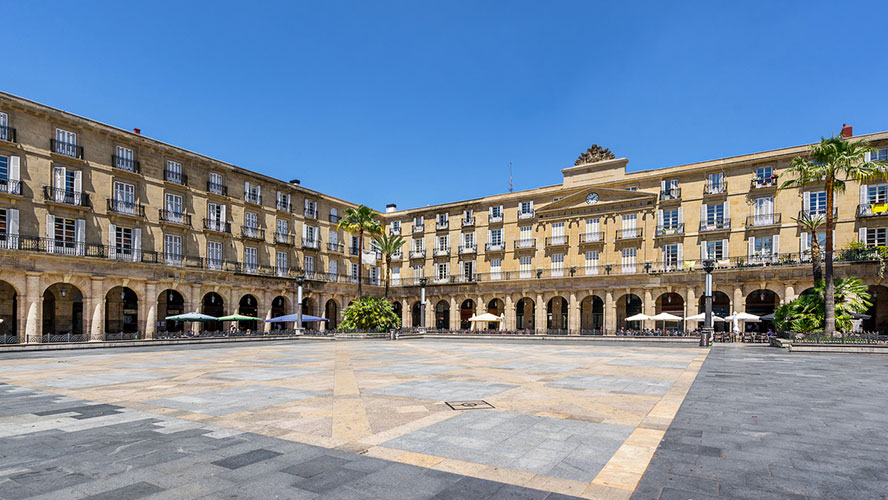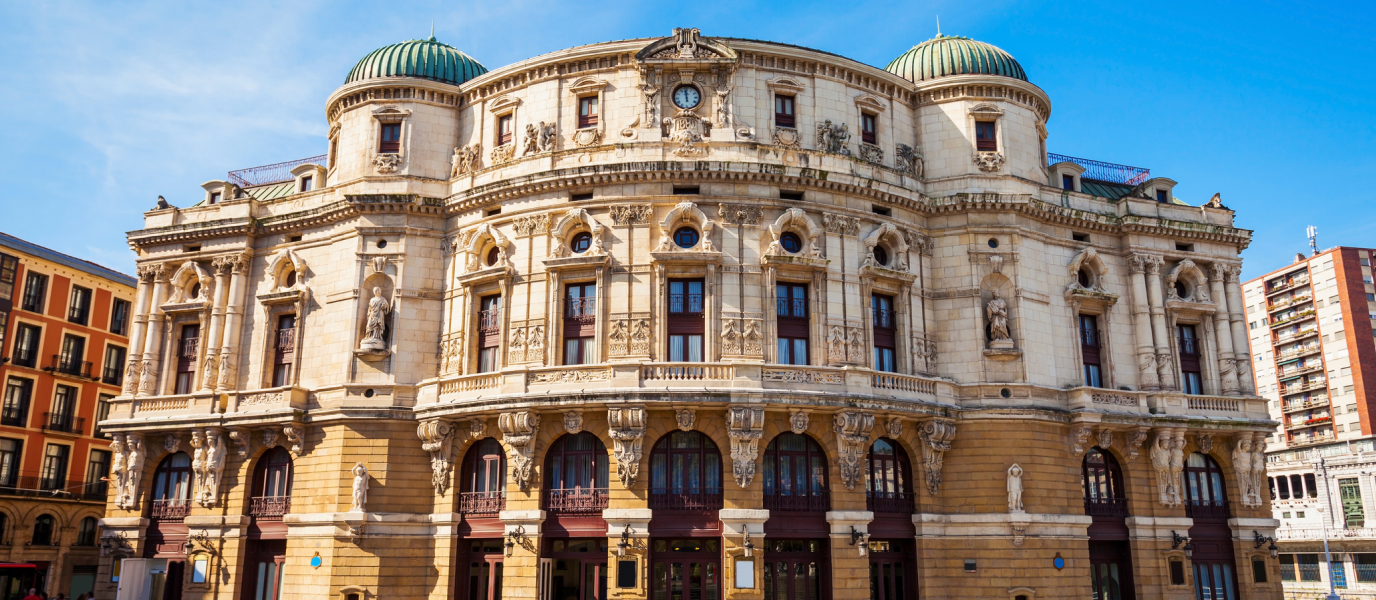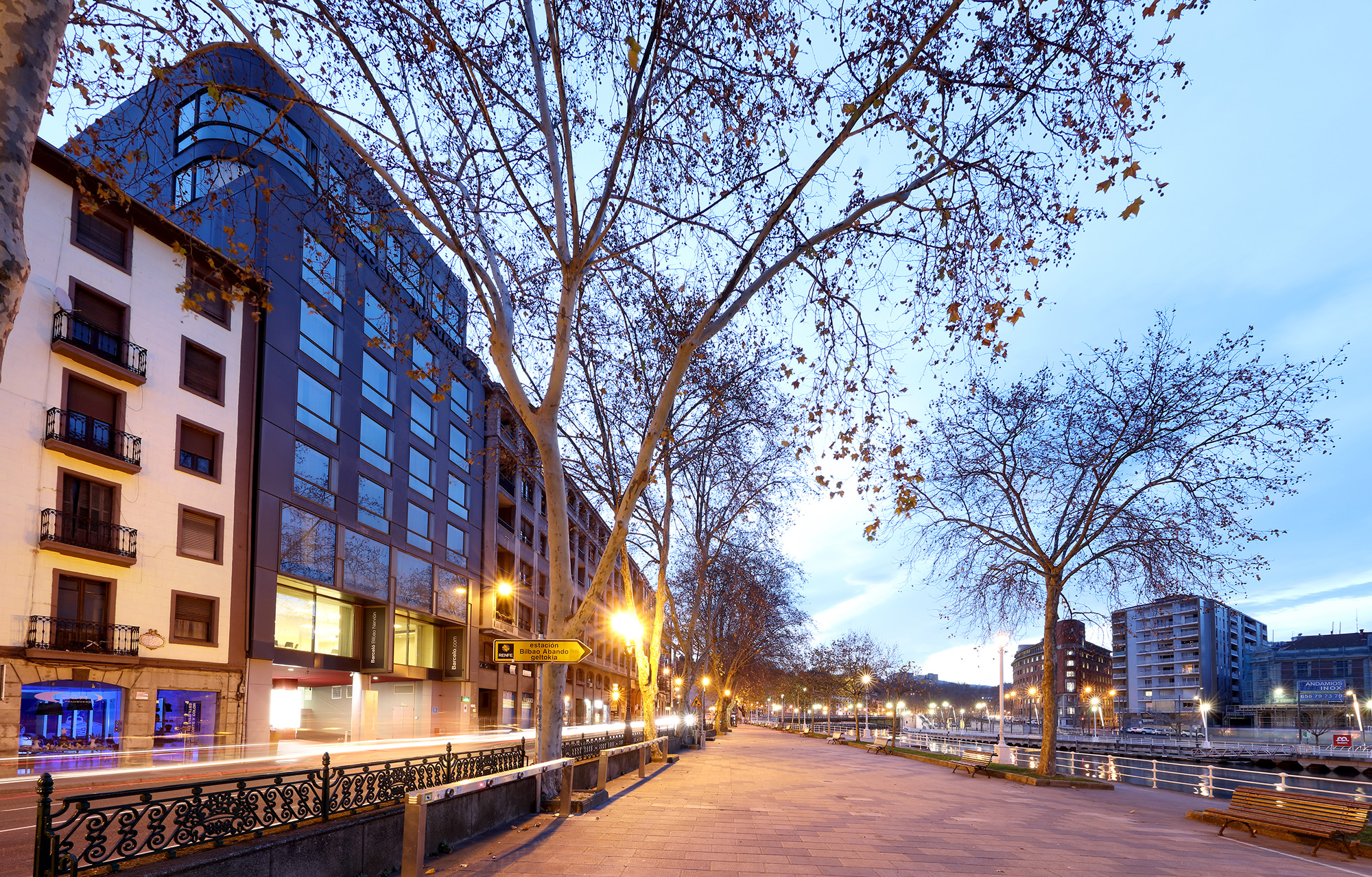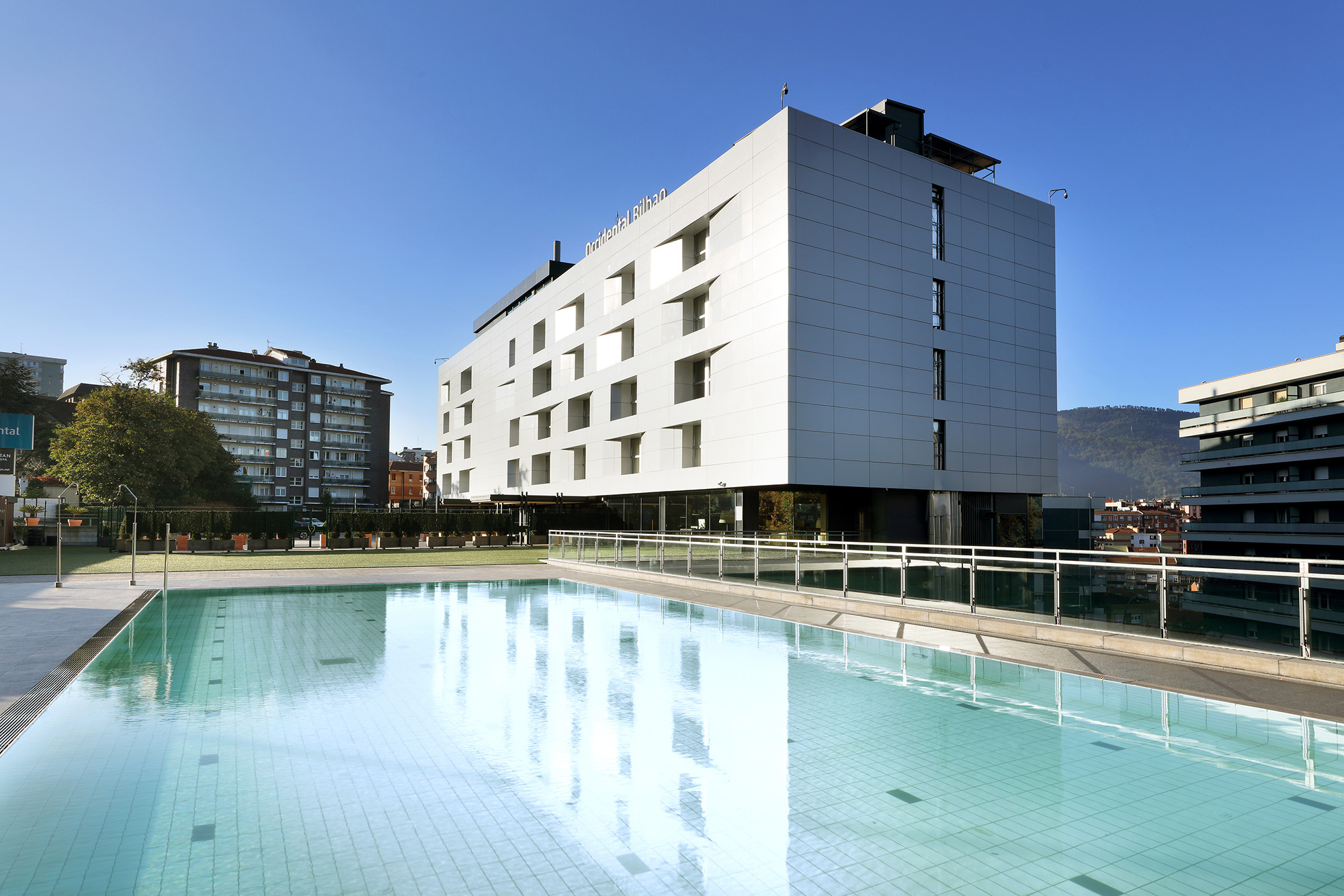Although Bilbao city centre is brimming with historic buildings of enormous architectural value, the Teatro Arriaga theatre stands out from the rest as an obligatory stop on any tour of the provincial capital. This iconic building, located at the entrance to Bilbao’s Old Town, has been classified as a Historic Monument. Not only can you go on a guided tour of this iconic building on the weekends, but you can also get tickets to see a play or show.
- The Teatro Arriaga: love for the performing arts
- History of the Teatro Arriaga
- What types of shows and concerts are held?
- What can I see and do close to the Teatro Arriaga?
The Teatro Arriaga: love for the performing arts
The Teatro Arriaga was built at the turn of the 20th century, at a time when swathes of cultural venues of this nature were being built across Spain. The proliferation of theatres in early 20th century Spain can be explained by three main factors: the emergence of a new bourgeoisie; the flourishing industry; and the spread of enlightened ways of thinking that saw the theatre as a space to showcase an area’s customs and habits. The combination of these factors led to the construction of many theatres nationwide almost overnight.
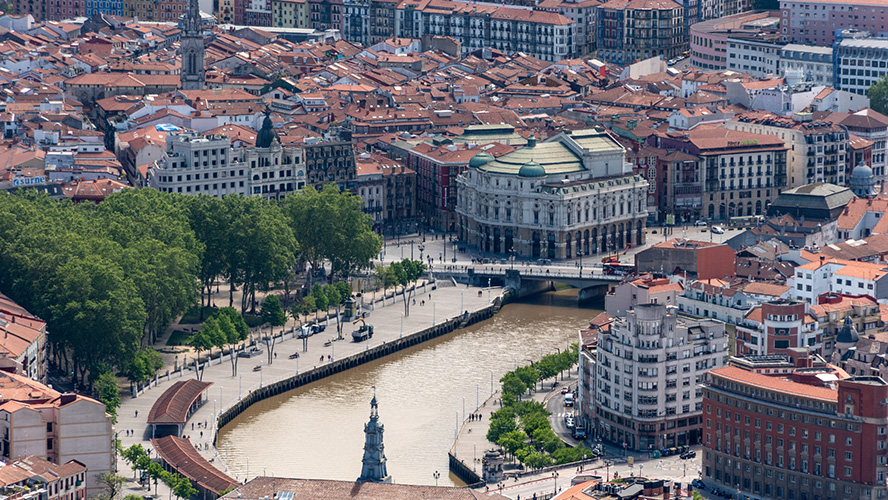
History of the Teatro Arriaga
The history of the Teatro Arriaga dates back to the year 1882, when a formal request was made for the construction of a new theatre that would be built with private capital but on public land. It was decided that the company Sociedad Nuevo Teatro Bilbao would be in charge of the theatre’s operation for 92 years, and that it would fall under public ownership thereafter. As part of this agreement, the Bilbao City Council would undertake to not build any other theatre until 1981.
Following the request, a call was held and subsequently won by the municipal architect Joaquín Rucoba. After complaints from various residents of Calle Bidebarrieta, a decision was reached on the definitive location of the theatre. The construction work took place between 1886 and 1890. Once completed, the theatre opened under the name Nuevo Teatro de Bilbao [New Bilbao Theatre].
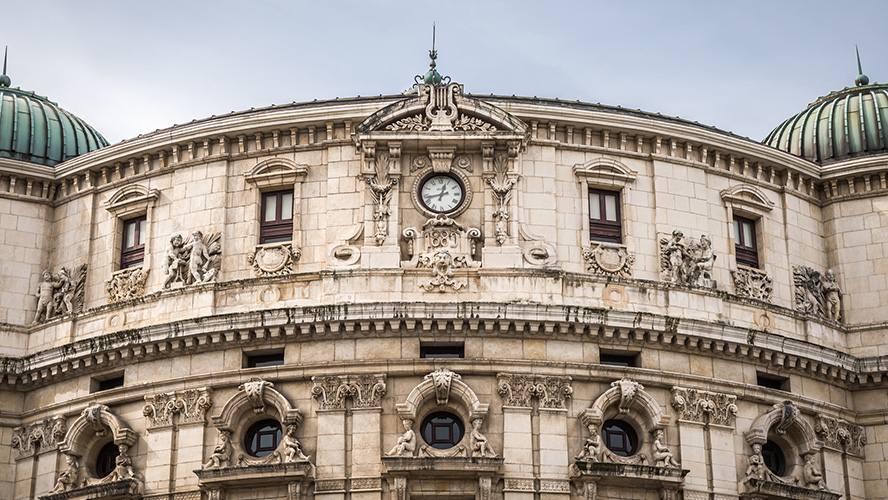
Now that you know a bit about its history, we’ll turn our attention to the structure of this beautiful neo-baroque theatre which is fitted out with period furniture and carpets embroidered at the Royal National Tapestry Factory.
The Teatro Arriaga has a trapezoidal floor plan, as it had to be adapted to the plot of land provided by the City Council. Various art historians have drawn parallels between this theatre and the Théâtre de la Renaissance in Paris, which was built in 1872.
Unfortunately, the original theatre was engulfed in flames in 1914 and razed to the ground, and it would take five years for it to be re-built and re-opened. It fell under municipal control in 1978 and underwent significant refurbishment in the wake of the Bilbao floods of 1983. The theatre celebrated its centenary in 1990, marking the beginning of a quieter period.
The name of the theatre was changed to ‘Teatro Arriaga’ in 1902 in honour of the Bilbao-born musician Juan Crisóstomo Arriaga, who many locals argue was every bit as talented as Mozart. This young musician, who composed his first opera at the tender age of 14, sadly died of tuberculosis before his 20th birthday.
What types of shows and concerts are held?
The Teatro Arriaga holds an eclectic variety of shows and performances, ranging from children’s shows to classical titles, operas, zarzuelas, ballet performances and even a wide range of concerts, including jazz, electronic and popular Basque music. All genres of music have a home in this stunning historical theatre.
Even if you plan to arrive ahead of time to admire some parts of the building before the show, you’ll still miss out on some of the colour, detail and anecdotes that can be provided in an official guided tour. These tours, which are highly recommended, are held every weekend in various languages. It includes stops at various strategic points around the theatre, including the Juan Crisóstomo Arriaga stairs, the foyer, the Isabelina salon, the stalls, the opera and zarzuela exhibition, the VIP booth and the Orient Express salon.
What can I see and do close to the Teatro Arriaga?
As we’ve already mentioned, the Teatro Arriaga is located at the entrance to Bilbao’s Old Town. This makes it a good starting point for discovering the streets of the city’s historic centre, where you’ll find monumental architectural jewels and no-less-monumental culinary gems in the form of pintxos (typical Basque-style tapas). We recommend visiting:
Bilbao Cathedral
Considered as one of the finest proponents of Gothic architecture in the Basque Country, Bilbao Cathedral was declared Historical and Artistic Heritage in 1931. Although Bilbao Cathedral was built at the turn of the 15th century, its façade has several neo-Gothic features due to a reconstruction carried out in the 19th century. Be sure to visit its Gothic cloister, the Capilla Mayor [Main Chapel] and the Puerta del Ángel [Angel’s Gate]. The latter is also referred to as the Puerta de los Peregrinos [Pilgrims‘ Gate], as it is found along the Camino de Santiago pilgrimage route.
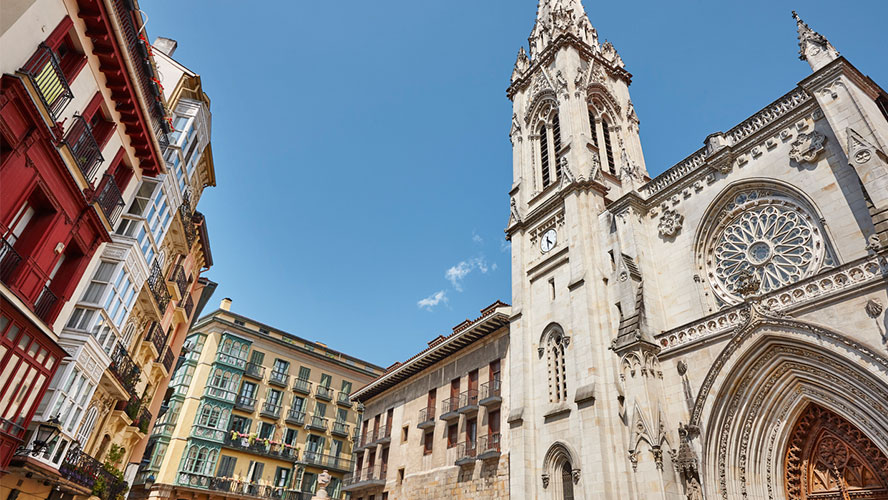
Mercado de la Ribera
The Mercado de la Ribera is something of a farmer’s market-food hall hybrid, making it the perfect place to discover local Basque produce and savour its stunning cuisine. You’ll find everyone from local residents doing their daily shop to tourists coming for a bite to eat and even Michelin Star chefs acquiring exquisite produce for their restaurant’s kitchens.
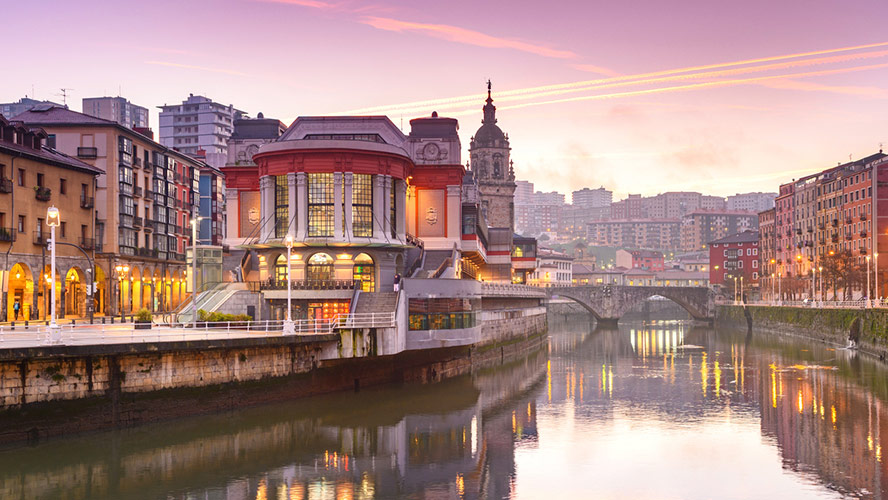
Centro Azkuna
Bilbao’s Centro Azkuna is a venue where contemporary culture, art and dialogue are ever-present. Not only can you enjoy its varied programme of events, but you can also take a guided tour to learn all about the adaptation of this modernist building that was once a wine and oil warehouse.
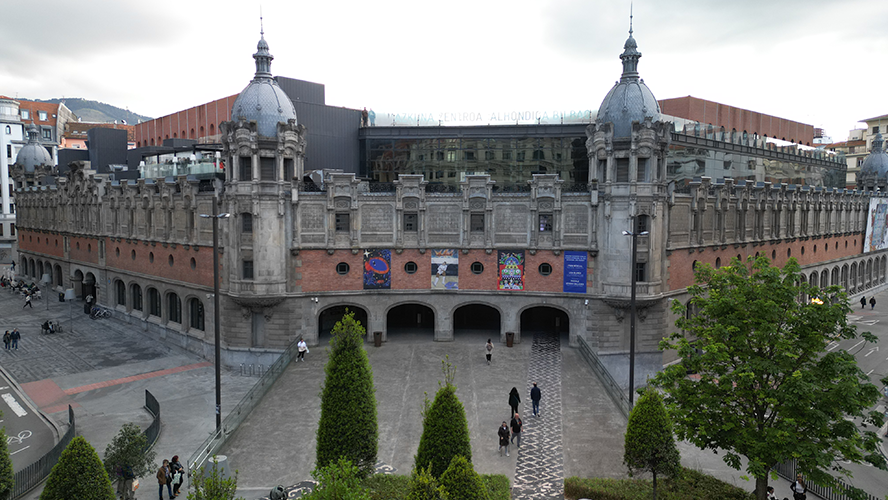
Tapas in Plaza Nueva
Very close to the Teatro Arriaga is Plaza Nueva, which is a great starting point for a pintxo tour around Bilbao’s Old Town. Be sure to swing by bars such as Charly, which is renowned for its cod rolls; Gure Toki, which serves delicious, well-presented sandwiches, including one of grilled foie and apple; Sorginzulo, popular for its squid and tuna fillet; and Urdiña, which is famed for its scrambled eggs and Iberian cured meats.
